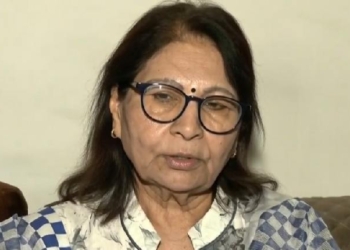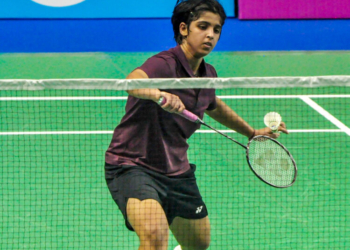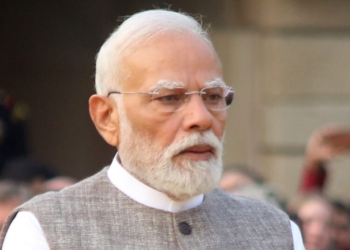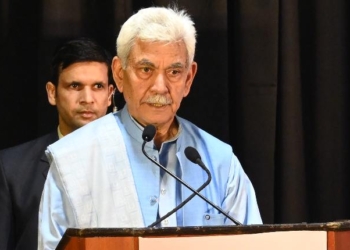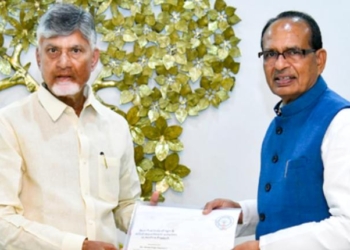New Delhi: The extensive ceremony of the inauguration of the Ram Temple at Ayodhya on January 22, with Prime Minister Narendra Modi as the principal invitee performing all the religious duties pertaining to the installation of the deity of Ram Lalla, has proved to be a national event that electrified the belief system of Hindus across India – including those who were living abroad. This happened in a manner not seen in this country’s history before.
The Prime Minister was at Ayodhya both as a Hindu and as the chief of the political executive governing the nation and this established, in the Indian context, the principle that holding a high political office did not mean that a leader should shy away from his or her religious commitments.
Secularism means that India granted complete freedom of worship and did not put a denominational stamp on the national or state government – it also at the same time, did not deny people in power their right to publicly own their faith.
Apart from the basic democratic concept of ‘one man one vote’ – that was in play regardless of caste, creed or gender – the only other secular requirement of governance would be that policy should not discriminate between sections of the citizenry.
The address of Prime Minister Modi was free of any suggestion of religious ‘exclusivism’ and it effectively countered the narrative of ‘majoritarianism’ and allegation of any other form of bias and largely focused on the importance of socio-cultural unity as a powerful instrument of national advancement.
The extraordinary turnout of people associating with the ceremony was no doubt driven by the historicity of the event – but they also had a clear perception that it is precisely the Hindu faith that alone had remained unacknowledged even after Independence.
The fact that the temple construction was started only after the Supreme Court gave its judgement in its favour through a constitutional Bench – this was highlighted by the Prime Minister – freed the event of any communal projections. If the inauguration of Ram Temple at Ayodhya enhances the political status of Prime Minister Modi in the eyes of the people, nobody can grudge it – the voter it should be remembered is an astute judge of the merit of the rulers.
In his scintillating address on the occasion, Prime Minister Modi declared that Lord Ram was the ‘spirit of the Constitution’ and Ram Temple a ‘symbol of national consciousness’ that liberated the people from ‘slavery’ and a ‘colonial mindset’. This latter was a reference to the historical subjugation of the Hindu religion as also to the British game of dividing India into communities and creating a minority-majority issue in politics.
He validated the place of glory that Hinduism enjoyed in India’s nationalism by affirming that “Ram is the faith of India, the foundation of India and the idea of India” and went on to add that “Ram was also the law of India, the leader of India as well as the policy of India”.
He put a stamp of eternity on it by saying that Ram was not only the present but also the future of India.
The speech was remarkable for steering clear of any sectarian overtones and for emphasising how the story of Ram established that differences between ‘high’ and ‘low’ did not exist for him.
Prime Minister Modi emphasised that “there should be humility in victory”, that Ram was “a solution, not a problem” and recalling how the opponents of Ayodhya temple warned of catastrophic consequences, asserted that “Ram was not a source of fire but of energy”.
Many leaders in India have misled the minorities into believing that giving respect to the religion of the majority amounted to encouraging ‘majoritarianism’ – they knew only too well that the Constitution would not permit any political moves in that direction. They in fact injected religion into politics by demanding “a share in governance on the basis of community identity”.
So long as the minorities had religio-cultural freedom and the same political rights and economic opportunities that others had, they should have no problem about being a part of the political umbrella that the nation provides through the universal adult franchise. If because of numbers the majority sends more members to Assemblies and Parliament it does not violate the intrinsic strand of secularism that runs through a democratic state like India.
It is time the Hindu majority of India was consciously involved in building nationalism which is a sentiment to be shared by all communities here.
Communal politics in India was pushed to a point where ‘nationalism’ was considered a ‘diminishing’ concept if not a politically ‘abusive’ word – all in the name of ‘sensitivity’ of the minorities – and there was even an endorsement of the suggestion that saluting the national flag or standing during the singing of national anthem should be made optional.
India no doubt had to suffer the unfortunate partition on communal lines in the process of achieving freedom – that was bound to produce a spill over – but many minority leaders of India continued to base their politics on the Hindu-Muslim divide which came in the way of national advancement and reconstruction.
A sense of belonging to the cultural heritage of the nation and adherence to the human value system shared by all Indians, should not be impeded by politics and it goes to the credit of Prime Minister Modi that he has been able to legitimise the concept of ‘Vasudhaiva Kutumbakam’ within India and at the global level as well.
The Prime Minister has taken this idea from the esoteric to the level of practicality in the international arena at a time when the world was marked by divisions, stealth attacks and disregard for human values and it is no surprise that he has emerged as a global leader whose influence mattered on the issues of war and peace. Prime Minister succeeded in turning the inauguration of Ram Temple into a starting point for a new nation-building effort, in this light.
The civilisational content of a nation today is a factor of newfound importance working for its strength.
In a composite scenario marked by a multi-religious and multi-lingual setting, people need to have a deeper sense of unity on the strength of a shared value system, the historical sense of ups and downs and an idea of friendship and adversaries in the present. ‘Religion’ defines the relationship of an individual with his or her God and presumably makes a positive contribution to ‘culture’ that determines how the individual would treat others in society.
A collectively acceptable code of ethics can run through the nation provided notions of ‘supremacism’ were not flaunted by the followers of any faith – the assimilative character of Hinduism stood out in this context, for its adherence to the idea that “God was one but the paths to reaching Him could be many”. Prime Minister Modi’s advocacy of this approach in his Ayodhya address befitted the occasion and was timely as well.
India should set an example of how nationalism strengthens democracy and vice versa. We should take notice of how China under President Xi Jinping has evolved a new doctrine of ‘Marxism with Chinese characteristics’ which has been acknowledged as ‘Xi’s Thought’ in the CPC constitution – like the Mao’s Thought was in the party ‘s history – but also how he has called for realisation of the ‘civilisational strength’ of China for national advancement.
India can more than match China on the point of civilisational history in terms of its vintage and richness on all fronts and it is a matter of great satisfaction that Prime Minister Modi in his address at Ayodhya brought out in adequate measure, the civilisational gift that India was able to offer to the entire world.
In going through the rigorous practices prescribed for his duty as the principal invitee at the religious ceremony at Ayodhya, Prime Minister Modi was conducting himself as a pious Hindu in his own personal right but it is in his public address that he stood out as the leader of a diverse nation, a torch bearer of nationalism and as a Prime Minister who was totally dedicated to carrying India forward towards prosperity and peace.
He talked of the demographic dividend of India accruing from the population of the young, exhorted people to have optimism and expressed his confidence that the installation of Ram Temple was a transformative moment that marked the advancement of a united India ‘for a thousand years ahead’. He mandated all Indians to follow the mission of ‘Ram to Rashtra’.
The temple has already showcased Indian talent in the fields of sculpture & arts, mobilisation of internally available material resources, technological progress, management techniques and the country’s acumen for national discipline.
Perhaps a good illustration of technological and spiritual advancement going together was in a website put out on the following day showing with the application of Artificial Intelligence (AI) how the newly installed Ram Lalla was turning his eyes, changing his smile and even moving his head like a child.
It is a sign of the quality of leadership Prime Minister Modi has provided in all walks of national life – political, cultural and economic, not to forget national security and governance as such – that the Ayodhya event emerged as a national milestone in fostering unity and a sense of purpose among all Indians who were prepared to rise above domestic differences to look upon India as a great civilisational whole serving the cause of human development and global economic advancement.
(IANS)





